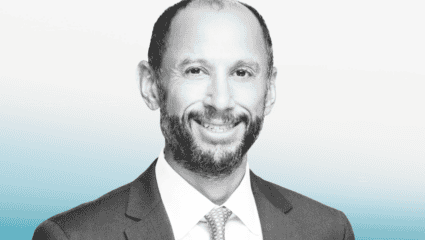
Private equity is catching a lot of flak at the moment — from politicians who see the investment class as plutocratic, investors who seek stronger regulatory scrutiny of the industry and insiders who aim to break the glass ceilings keeping women from rising through their ranks.
The industry has made some progress on the latter issue. A Preqin study released in February showed the percentage of female board seats at private equity firms climbed to 5.2% in 2018 from 4.1% in 2017.
Preqin’s analysis of the more than 280,000 industry professionals in its database also found, however, that just 17.9% of private equity employees worldwide are women and about 9.9% of senior roles at private equity firms are occupied by women.
And through interviews with private equity professionals and top financial and legal advisers to private equity firms, The Deal found that the progress that is occurring is at a snail’s pace. Because even though people are talking about diversity in private equity, it remains a world where many people, either consciously or unconsciously, fail to treat women and men equally regardless of their status or position.
(This article is the cover story in our Q4 Dealmaker Quarterly, which is available here.)
“I had an investor once ask me how I was going to manage having three children and running a firm, and I thought, ‘That’s a great question. You should ask every single one of your managers that, male and female,’ ” Kinzie Capital Partners LLC founder and managing partner Suzanne Yoon said. “Having children is a big responsibility, and I don’t think those types of questions should be designated solely for women managers.”
FFL Partners LLC director Karen Winterhof, 32, is the most senior female investment professional at her firm. That’s not to disparage FFL, cautioned Winterhof, because FFL is one of many small firms working on the issue of diversity. But this gender disparity is the rule, rather than the exception, and according to Winterhof, investors are beginning to take notice.
“I can tell you, many of [the investors] have become pretty direct about this issue,” she said. “When a firm provides an investor update, the team pages are often organized by seniority, and if the first page has your list of all white male partners, that’s going to raise questions.”
Smaller firms are at risk of falling behind their larger counterparts, which have the infrastructure in place to more quickly implement programs with the goal of adjusting their demographic, according to Kirkland & Ellis LLP private equity attorney Jennifer Perkins.
“We are starting to see private equity firms be more focused on diversity in a real way,” Perkins said. “One of the things that is changing, and that we’ve seen in some recent studies, is that diverse groups are proving to have better outcomes. It’s no longer just about, ‘We want to be good diverse businesses for the sake of being diverse.’ It’s also now, ‘We think this is the right answer from a purely commercial perspective.’ ”
No one is doing very well, though.
Bloomberg found upon analyzing its data in October that women fill only 8% of senior investment roles globally at the 10 largest firms that use debt to buy companies.
Still, firms big and small are approaching this issue with nothing but openness, according to Nancy Lotane, managing director and chief human resources officer at one of the world’s largest private equity firms, Bain Capital.
“There is a tremendous amount of very positive energy being spent on trying to systematically look at what are the things that caused these structural imbalances over a long period of time,” Lotane said. “When I connect with other HR leaders in our same space, I’m struck by widespread desire to get after this and a widespread desire to share best practices. All boats will rise if we collect and figure this out. And that’s a positive place to be in an industry that may be perceived as not being open to this.”
So what’s keeping even the biggest firms from closing the gaps in their ranks?
From conversations with these industry women and others, it appears to be a lengthy list that includes an omnipresent unconscious bias, a lack of statistical analysis and understanding of diversity’s role in investment success, a failure by firms to focus enough on retention and a tendency for women to accept the role of team player rather than asserting and supporting their individual success within an institution.
And while few were willing to explicitly denounce the efforts made so far by firms and other organizations, some pointed to research that illustrates that the efforts that go into retaining and advancing women in professional arenas may not bring about long-term change.
In other words, these efforts can be construed as lip service, as Arin Reeves, a former attorney and current president of inclusion-focused research and consulting firm Nextions, pointed out in her 2014 book, “One Size Never Fits All: Business Development Strategies Tailored for Women (and Most Men).”
“… professional service firms develop and tout work-life balance policies including part-time, flex-time and other opportunities for working moms; however the research indicates that these opportunities most often exist only in theory for recruitment, branding and reputation purposes,” Reeves wrote, citing an earlier study published in the Stanford Law Review by Mark Galanter and William Henderson. “Women do not avail themselves of these opportunities because doing so would slowly dismantle their careers.”
Building an Investment Thesis for Diversity
Under the leadership of partner Nishita Cummings (who is among this feature’s accompanying Top Female Veteran Dealmakers), Kayne Anderson Capital Advisors LP’s budding growth equity platform has achieved 10 realizations delivering a combined 31% internal rate of return and a 2.4 times gross multiple on invested capital.
Private equity firms within the growth equity space typically target a net internal rate of return, or IRR, of 20% to 30% for these vehicles, but the cumulative net IRR of growth equity funds between 2000 and 2014 was about 12%, according to an April 2019 research report from consulting firm Callan LLC.
Based on Callan’s research, Kayne Anderson could argue that Cummings’ performance proves she is a talented investment professional who drives more than acceptable returns for the firm and its limited partners.
Her IRR is above the internal returns growth equity firms expect to generate and far above the returns they actually generate. Meanwhile, her MOIC is well within PE’s average of 2 to 4 times.
But one person does not make an adequate sample size. The bulk of research done on the effects of diversity in private equity fund performance up to this point have similarly faced the dilemma of small sample sizes, along with various biases.
A study published in January by Harvard Business School professor Josh Lerner and several other members of his private consulting firm, Bella Private Markets, found no indication of a relationship between diverse ownership — defined as a firm in which 50% of the equity is held by women or minorities — and PE fund performance.
Lerner hedges his study, which relies heavily on data from Preqin, for several limitations of data compilation, such as the fact that data providers rely largely on voluntary reporting by funds as well as that funds that underperform have less incentive to make their performance data public.
In their work, Lerner and his team pointed to two studies performed in 2012 and 2013, which provide some evidence that some diverse firms are performing well compared with the PE industry as a whole. But both sample sizes are small and have biases that make it difficult to glean much concrete evidence from the samples, Lerner argued.
The 2012 study analyzed data from 14 firms, all sourced from a trade association, which may introduce some biases in the types of firms included, while the 2013 study obtained performance data from six women-owned or -managed PE firms.
A lack of hard data on the effects of diversity in private equity provides at least one potential reason why fund managers may be reticent to drastically change their model.
That’s not to say there isn’t some compelling evidence on the positive effects of diversity on investing, generally.
One thing agreed upon by many governance experts is that more diversity leads to less groupthink, which can in turn lead to more efficient decision making and, subsequently, greater financial performance.
“One example I was given by a female partner of a fund was a situation in which an all-male investment team had done due diligence on a female clothing store that targeted middle-aged women,” Winterhof said. “And she said to them, ‘Brick-and-mortar clothing retail is having a really difficult time, what differentiates this business?’ and their response was something along the lines of ‘They have better fit.’ I couldn’t believe that, and it’s just one instance I think diversity of thought would have really helped.”
A February 2016 study from the Peterson Institute found that a move from zero women leaders within a corporation to 30% representation was associated with a 15% jump in profit, while a 2017 study by MSCI Inc. found that U.S. companies with three or more female directors over a five-year period reported earnings per share that were 45% higher than companies without any female directors.
This data suggests that private equity firms also could benefit from diversity on their boards and investment committees, and the path to those positions of influence usually travels through top investment and operations roles within the firm.
Solving a Culture Issue at the Organizational Level
What has become an easy stitch for firms across asset classes is filling the hiring talent pool with closer to an equal number of men and women. But where private equity may be losing more of its top female professionals is along the ladder to leadership.
“It’s easy to focus on recruiting, since it’s an easy metric to understand: ‘We have a lot of women coming in, let’s hire them,’ ” Kirkland’s Perkins said. “But what’s harder to measure and what is harder to accomplish is retention. For folks more in the middle of their career, how do you get them to the next step?”
There is a risk that too much focus is spent on what gets people in the door, but that can miss an even bigger part of the equation, Perkins explained.
“Are you bringing women on the pitch? Are you putting women on the good deals?” she said. “That’s the harder part and where firms can start steering their attention. Just because a woman wasn’t on the last pitch or deal doesn’t mean she shouldn’t be on the next.”
When FFL Partners’ Winterhof was a younger professional at a different firm, she said she was one of the only women at her level and often received some of the worst so-called staffings, or rote administrative assignments that had to be done but did not carry with them much career upside.
“I think the good news is that the whole conversation people are having today around diversity is helping people become more aware about how to avoid these situations,” she said. “But I would say to younger women that it’s really important for them to speak up and advocate for themselves.”
Multiple private equity advisers posited that retention and promotion within private equity firms may rely to some degree on the ability to promote one’s own investments and investment ideas over those of colleagues.
In 2012, Google used data to attempt to identify some of the problems it was having with hiring and retaining women. As The New York Times reported at the time, the tech giant found that potential female hires were disproportionately not making it past the telephone interview and women were disproportionately not being considered for promotions in technical areas.
Google found that women were not as expressive of their accomplishments as men were in interviews, and women were nominating themselves less than their male counterparts for technical promotions.
Per the Times, Google tweaked the way its interviewers asked their questions and reported the responses resulting in more female hires. And the company began hosting workshops for women on the importance of nominating themselves and put in place support systems to ensure they did so.
Google is far from perfect, but in “One Size Never Fits All,” Reeves argues that its effort to fix two glaring errors in its system demonstrates “ways in which differences between men and women don’t have to be erased — they can just be taken out of the evaluative process in understanding talent and potential.”
Private equity managers and other business leaders must focus on these ways in which they can expand their model to allow for greater success among women, rather than relying on them to do it all on their own, she explained.
“Firms cannot rely on people who are extremely successful leaders in their ranks to radically change the model through which they became successful,” she wrote.
One so-called rainmaker within a professional services firm that spoke to Reeves for her study spoke of the pressures on trailblazers.
“You are asked to be a leader for all things women while still actually doing your job,” the female leader said. “If you say yes, you get hit with a ton of additional work and time commitments. If you say no, then you are the b word because you don’t care about women’s success overall. The guys don’t have that added responsibility.”
Committed peers, mentors and leaders fostering inclusion and empowerment at the organizational level have a snowballing effect, Ropes & Gray LLP chair-elect Julie Jones told The Deal.
“Private equity is an exceptionally demanding career, and talented women have many career options,” she said. “Organizations need to provide women the opportunities, trajectory, and working environment that makes the hard work and sacrifice feel worthwhile.”
Seeking Out Collaborative Networks in a Competitive Landscape
Yoon is fortunate in the fact that she loves to golf.
Many women in private equity would like to try golfing but don’t feel safe trying during firm outings or other business functions, she said. One program she commended for addressing this issue is an annual golf tournament held exclusively for women by the nonprofit Women’s Association of Venture and Equity every year in Chicago.
It’s programs like these that can help young women in private equity build their networks and meet more experienced women within the space while personally overcoming challenges presented by a male-dominated industry, she argued.
“I think it’s really important to organize and cultivate your private equity network broadly,” Winterhof said. “Go to more and more of those events because a key part of changing this situation is finding senior women who are around to guide junior women.”
Because as these first-hand accounts illustrate, one of the greatest boundaries to retaining women is that young women see a lack of women in positions of power and respect at a firm and leave the industry because they believe they will also fail to achieve that level of success.
For some like Yoon, searching for the path to success has steered them toward forming their own firm, where the barriers to entry are particularly high.
Lerner’s study found that, “on average, diverse-owned PE firms are much more reliant on a small number of institutional investors” than the industry as a whole.
Even when they can find the investors, women- and minority-led firms may find that failure comes at an even higher cost.
“There were a number of reasons to [start my own firm]; I saw an opportunity to work with the people I wanted to, to work in a location I wanted to, and to build a team with a very inclusive and diverse culture,” Yoon said. “But I also feel a very real sense of responsibility — not just to my investors, family and colleagues, but also to other women in my position — for us to be successful. Because one of my fears is that if we don’t succeed, it is not good for any of us. I think any woman may have this overhanging cloud of self doubt.”
But there is also hope, according to Yoon. She said one of her greatest inspirations is Robert F. Smith, founder, chairman and CEO of Vista Equity Partners LLC, a private equity firm with more than $52 billion in cumulative capital commitments in 2019.
“He started as an African American manager and kept going until he was just a good manager,” she said. “My hope is that happens to many female-run funds as well, that one day we’re no longer female managers but that we’re just good managers.”
Editor’s note: The original version of this article, including advisers and other details, was published earlier on The Deal’s premium subscription website. For access, log in to TheDeal.com or use the form below to request a free trial.
This Content is Only for The Deal Subscribers
If you’re already a subscriber, log in to view this article here.



